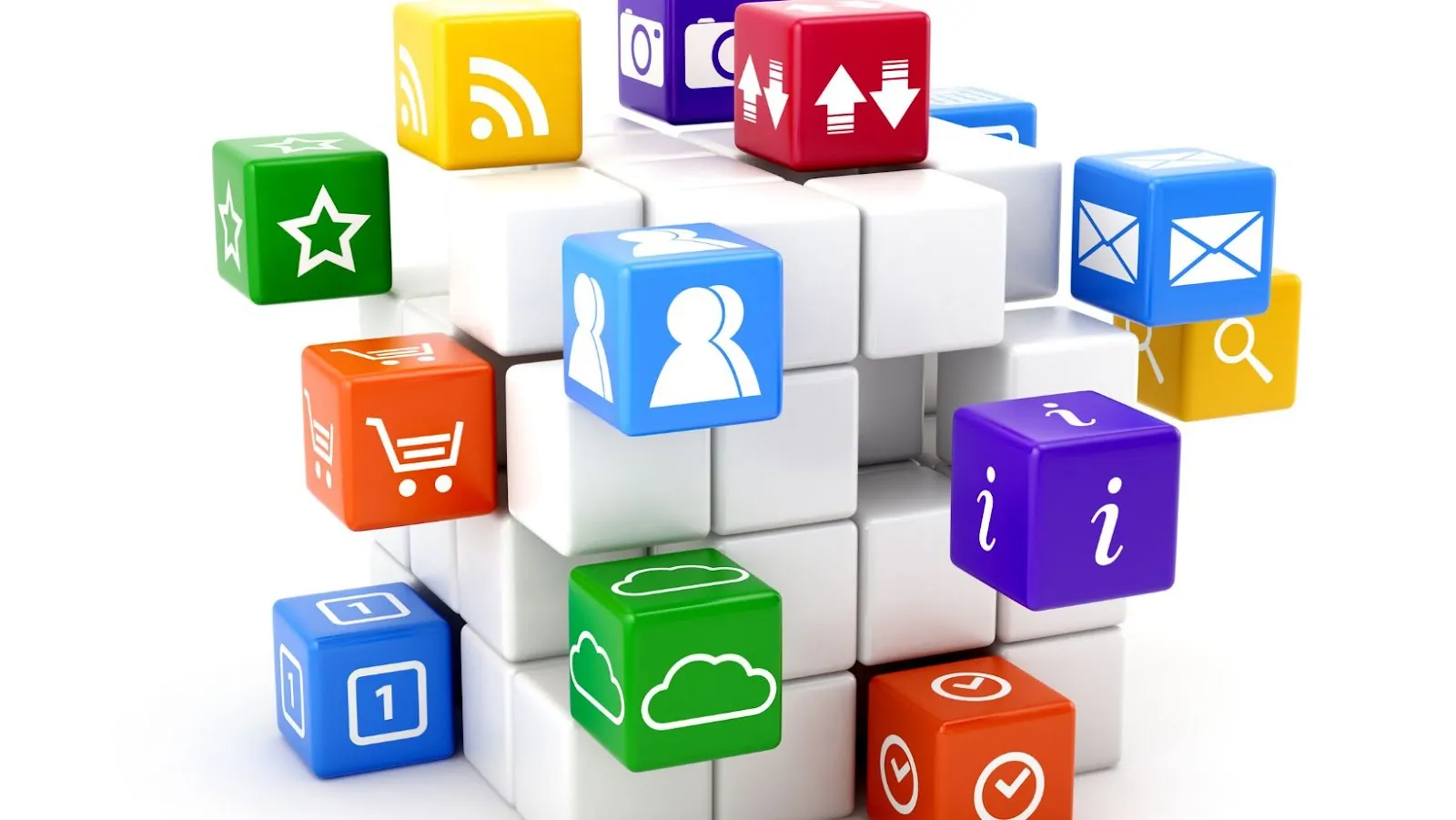Table of Contents
In the digital age, businesses of all sizes seek ways to differentiate themselves and stay competitive. One way to do this is by utilizing Microsoft technologies to empower customers’ digital transformation.
Businesses can stay ahead of the competition and relevant in the ever-changing digital landscape by focusing on strategies to increase customer engagement, gain insights, and optimize operations.
This article will explore some Microsoft technologies that can help you achieve your digital transformation goals.
What is digital transformation
Digital transformation can be defined as the use of digital technologies and processes to improve existing business operations and create new business strategies. It is the incorporation of digital technologies such as the Internet of Things (IoT), cloud computing, big data analytics, artificial intelligence (AI), machine learning (ML), blockchain, Enterprise Mobility Management (EMM) and more into existing business models. This helps organizations become more agile, efficient, responsive and productive across various departments like marketing, sales, customer service and other crucial operations.
Microsoft offers various innovative technologies to help organizations drive their digital transformation initiatives. Organizations can leverage these solutions to move away from traditional processes and create new growth opportunities. These powerful yet easy-to-use solutions modernize applications, speed up workflows and empower customers with interactive experiences that are second to none. By utilizing these technologies, organizations can transform into hyper-productive businesses capable of adapting quickly to ever-changing customer requirements while delivering amazing experiences across all channels.
Utilizing Microsoft technologies to empower customers’ digital transformation
Microsoft technologies are necessary for digital transformation, enabling organizations to build and deploy various innovative and scalable solutions.
This section will explore how Microsoft technologies give customers the power to digitally transform their businesses. We will look at how these technologies are used to drive the success and growth of businesses and how they can bridge the gap between customers’ current and future strategy.
Azure
Microsoft Azure is a cloud-based platform that enables organizations to build, operate, and manage applications, websites, and other services through a network of data centers. It’s an end-to-end solution for developers to create, deploy, and manage applications in the cloud. In addition, Azure provides an easy-to-use toolset for developers to quickly create integrated cloud solutions.
Azure features a comprehensive set of innovative technologies such as Azure Network Services for network connectivity, virtual machines for compute and storage capabilities, containers for rapid scaling and deployment of applications with ease, Service Fabric to develop reliable microservices apps that can scale as needed without interruption. It also offers database services like SQL database and Cosmos DB; identity management capabilities; orchestration services; big data & analytics tools; functionality which helps improve customer’s digital experiences while providing enhanced insights into their operations.
Moreover, the intelligent edge capability allows customers to deploy apps closer to their users through mobile devices or edge devices such as industrial controllers or robots in their factories. This reduces latency while cutting down the need for maintenance due to tightened security controls and onsite support costs as no physical hardware is required.
Overall Microsoft Azure helps customers reap greater value from their investment by providing them with access to innovative technologies that help improve their digital transformation journey – from start up businesses globally expanding their presence; reengineering existing IT systems so they can compete more effectively in the market; building new capabilities; leveraging analytics to make informed decisions across the board – taking full advantage of Microsoft technologies does indeed empower customers’ digital transformation journey significantly.
Dynamics 365
Dynamics 365 is a comprehensive set of cloud-based business applications that can help organizations drive business performance. It includes everything from ERP and CRM systems, to customer service, field services, operations and financials. As a result, Dynamics 365 helps organizations drive productivity, improve customer experiences and grow their businesses.
Dynamics 365 offers features and capabilities that can help organizations to revolutionize their processes across finance and accounting, sales force automation, retail management, customer service, knowledge management and more. It eliminates tedious manual tasks with AI-driven solutions for improved data accuracy and accelerated decision making. In addition to process streamlining benefits offered by Dynamics 365, it allows for greater flexibility in operations as business needs change.
The application suite offers complete integrations across Microsoft products such as Azure IoT Suite for analytics powered by the cloud; Azure Machine Learning to quickly identify trends; PowerApps for building low code custom apps; Power BI for visualizing insights; Flow for automating processes; Dynamics Customer Insights to improve the customer journey; Cortana Intelligence Suite which provides a platform to build AI solutions through pre-built cognitive services tools; plus Office including Outlook integration giving customers access to all the data they need in one place.
By utilizing these Microsoft technologies together with Dynamics 365 solutions organizations will be able to drive successful digital transformation strategies that empower customers while providing meaningful insights into operational effectiveness.

Power BI
Power BI is a data visualization and analysis tool that empowers customers to transform massive amounts of data into meaningful insights and actions. It enables real-time analytical data from virtually any source, including relational databases, non-relational databases, web services, Windows applications, and flat files. Business users can use an intuitive drag-and-drop interface to quickly build stunning visualizations and interactive dashboards with comprehensive data reporting capabilities. Power BI also has machine learning functionality that helps uncover trends and patterns in the source data. In addition, it allows customers to access experts for help on difficult datasets or large amounts of data.
Additionally, Power BI allows users to make decisions quickly with easy-to-understand visuals and reports. Power BI has something for everyone- from financial analysis to customer segmentation—no matter the industry or requirements. Reports are simple to share among team members who can collaborate by commenting on shared visuals using natural language processing (NLP). The dashboard experience is also easily extended with custom widgets built using TypeScript SDKs that leverage the full power of Microsoft technologies such as artificial intelligence (AI) services like Azure Cognitive Services.
With an ever-growing list of features like automatic refresh powers within datasets, Power BI enables customers to make better decisions faster backed by powerful analytics insights through its transformative features.
Benefits of Utilizing Microsoft Technologies
Increasingly, businesses are becoming more digitally enabled, transforming customer experiences through technological advances such as machine learning, artificial intelligence, and the Internet of Things. Microsoft technologies offer powerful solutions for digital transformation within organizations, opening up new possibilities.
This article will look at the key benefits of utilizing Microsoft technologies to empower customers’ digital transformation.
Increased efficiency
Utilizing Microsoft technologies to empower customers’ digital transformation can help organizations maximize their potential to become more productive, efficient, and secure. Microsoft’s cutting-edge cloud solutions enable businesses to leverage their existing assets and create new services more efficiently.
The power of Azure and other cloud-based tech tools helps unprecedentedly improve the performance and scalability of data processing. Moreover, combining innovative technology with advanced analytic capabilities to use real-time customer insights, businesses can leverage the cloud’s open-source architectures to speed up application development while reducing costs and deployment timelines.
Microsoft provides comprehensive cloud solutions that allow enterprises to capitalize on Big Data applications. These tools enable companies to capture new customers through analytics-driven customer insights or by leveraging machine learning models like image recognition technology for commerce services. In addition, by optimizing customer engagement strategies through personalized experiences tailored for a given user’s needs, companies can create higher touchpoints for collaboration and increased efficiency in operation management.
Furthermore, incorporating mobile devices into the work landscape also accelerates productivity through telesales or remote workers from anywhere in the world enabling global business reach with advanced levels of collaboration and reduced translation time for faster delivery cycles.
Improved customer experience
Organizations must integrate Microsoft technologies to provide specialized services as customers turn to digital solutions for innovation and optimization. While traditional solutions are still popular in certain industries and applications, utilizing Microsoft technologies can benefit digital transformation. By applying these advanced solutions, customers can get the most out of their operations, acquiring improved user experience and higher efficiency.
Microsoft technologies enable organizations to deliver more versatile customer experiences, creating personalized journeys that make users feel more connected to a service’s offerings. From the Outlook customer relationship system to Azure cloud computing capabilities, a comprehensive range of integrated tools help ensure an optimal experience whenever a customer interacts with someone from the firm.
Utilizing Microsoft PowerApps within these advanced customer journeys allows businesses to create apps fast without putting too much pressure on existing IT departments or investing heavily in new development teams. This app-building tool allows users to quickly create multi-platform apps using easy-to-navigate drag-and-drop features that are intuitive and customizable enough for nearly anyone’s needs. Furthermore, leveraging Power BI allows customers to analyze real-time data into insights that can be used immediately to improve operational decision making.
Integrating Microsoft technologies creates incredible possibilities for improving customer experience through greater efficiency and personalized service options across all channels. Companies should work with IT divisions or partner with reliable technology support providers to find the best way to integrate these powerful tools to drive greater customer satisfaction across digital operations and speed up transformation processes throughout the organization’s value chain.

Enhanced data security
Microsoft technologies offer customers a robust, multi-layered approach to maintaining data security. This includes built-in enterprise-grade encryption for communications and data storage and advanced cloud and mobile security technologies for both on premises and cloud services. This ensures information stays safe from external threats such as hackers, malware, ransomware and malicious actors. Additionally, comprehensive identity and access management options such as Azure Active Directory can help businesses enforce stringent controls over who can access their resources.
Microsoft’s end-to-end encryption offers end users peace of mind that their data is confidential when transferred or stored on the cloud platform. In addition, the Multi-Factor Authentication (MFA) system for Microsoft products provides an additional layer of security that helps to protect user accounts by verifying user credentials with multiple factors such as physical devices or biometric authentication methods.
By utilizing Microsoft technologies to strengthen their cyber defenses, businesses can confidently embrace digital transformation initiatives while minimizing the risks associated with cyber threats. Structured investments in secure technologies lessens the likelihood of attacks that might compromise customer’s confidential information whether stored on premises or in the cloud.
Case Study
Microsoft technologies have enabled digital transformation for a wide range of customers across the globe. This case study will examine how Microsoft technologies have been utilized to empower customers’ digital transformation initiatives.
We’ll discuss the benefits of leveraging digital transformation solutions to improve customer experience, optimize operations, and accelerate growth.
Microsoft Azure and Dynamics 365
Microsoft Azure and Dynamics 365 are two of the leading business offerings from Microsoft. Azure is a cloud-based platform that provides companies with tools and services for building, managing, and running applications in the cloud. Dynamics 365 is an enterprise resource planning (ERP) system that can help organizations manage their operations and customer relationships.
This case study overviews how Microsoft’s technologies can help organizations maximize efficiency and business performance. This resource discusses the advantages of using Azure to support applications; explains how Dynamics 365 offers greater visibility into operational performance; shows how a unified solution can improve collaboration; identifies best practices for integrating Azure tools with existing systems; and provides details on ways to measure the impact of technology investments on business objectives. Additionally, we include examples of businesses who have successfully integrated Microsoft solutions into their operations.

Conclusion
Microsoft technologies have immense potential for empowering customers’ digital transformation. From cloud platforms, Machine Learning, Azure services, data and analytics to modern productivity tools for collaboration and teamwork, Microsoft’s offerings provide almost unheard of operational efficiency, cost savings and visibility into customer operations. As a leader in digital transformation, Microsoft continues to develop ground breaking solutions that reshape how organizations approach their IT operations.
Organizations must assess their requirements before deciding on the most appropriate platform or service they should use while employing Microsoft technologies. Whether they need an in-premise solution or a powerful cloud offering like Azure or Office 365; hybrid or multi-cloud environment; machine learning or AI powered insights or rewards programs that guarantee customer loyalty – the choice is virtually limitless. By assessing requirements accurately and identifying opportunities that leverage existing investments, see the best possible return on investment (ROI).
Organizations using Microsoft technologies to transform digital processes can look forward to improved operational efficiency, cost savings and visibility while working with flexible vendors capable of delivering world-class solutions tailored to specific needs. With such extensive resources at their disposal embracing Microsoft technologies provides a definitive competitive advantage in enterprise IT evolution.







